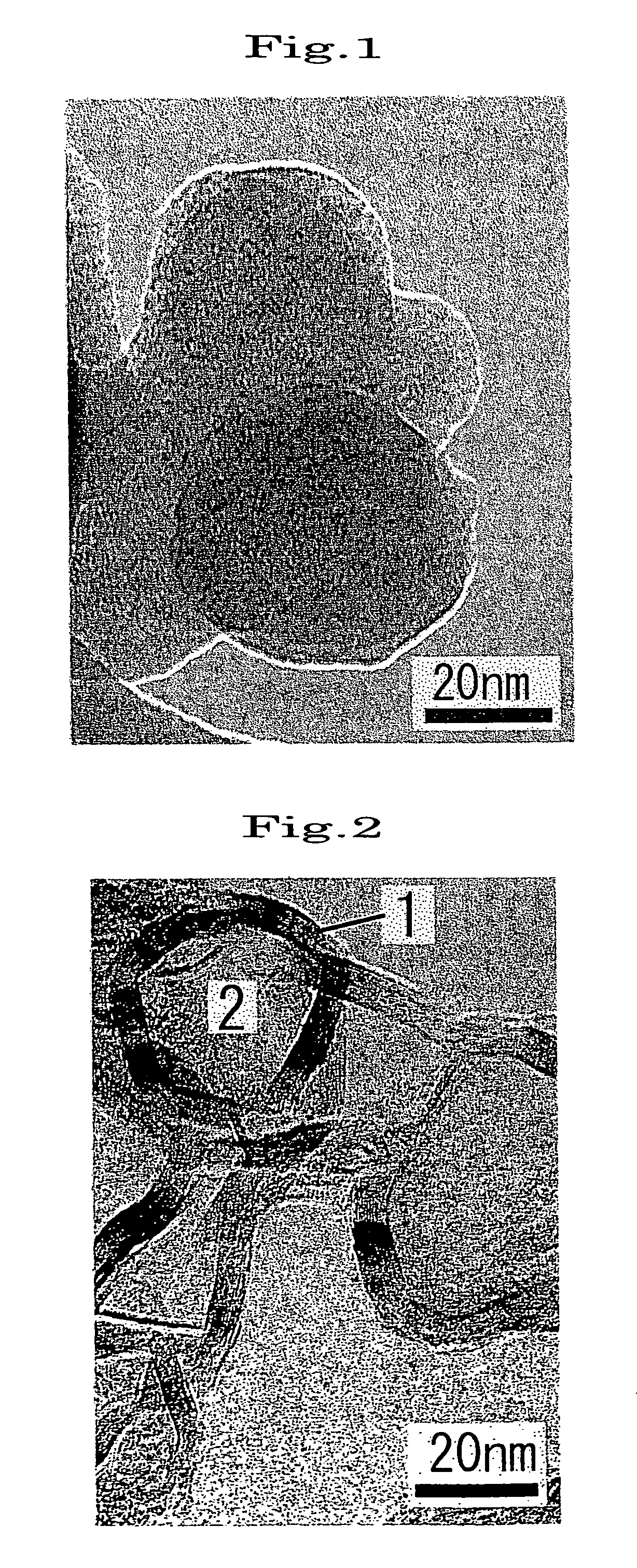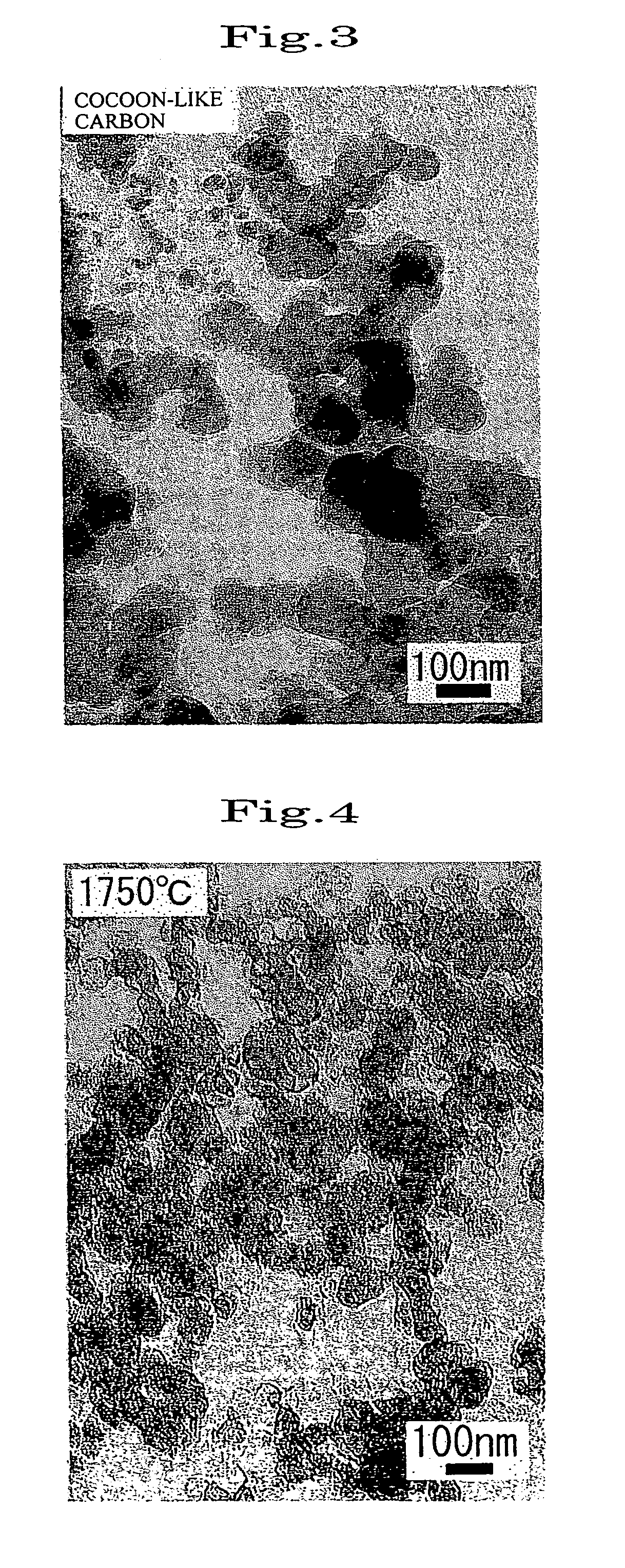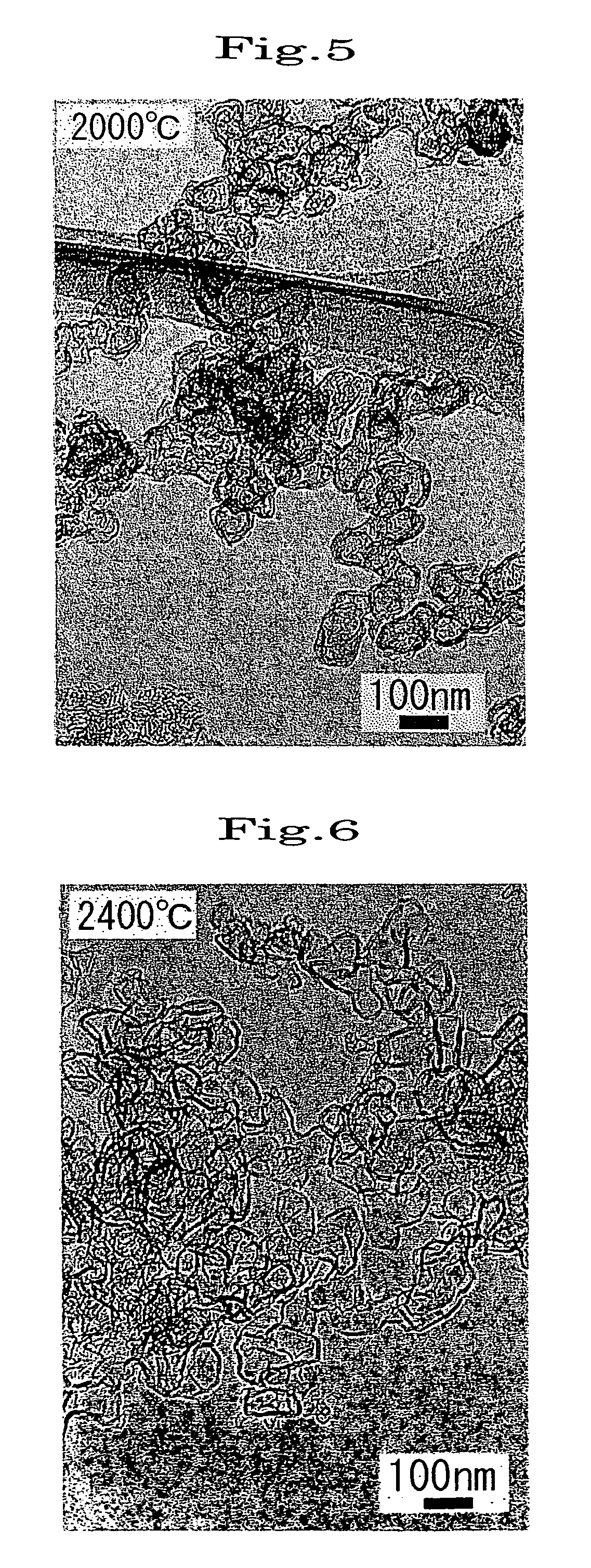Carbon nanoballoon structure and method for preparation thereof, and electron emitter
a carbon nanoballoon and balloon body technology, applied in the direction of discharge tube/lamp details, energy-based chemical/physical/physical-chemical processes, nanoinformatics, etc., can solve the problems of inability to efficiently and stably obtain a nanometer-sized hollow carbon structure having a large inner space, and the method of efficiently and stably obtaining such a structure has not yet been put into practice, so as to achieve easy and stably production of such a
- Summary
- Abstract
- Description
- Claims
- Application Information
AI Technical Summary
Benefits of technology
Problems solved by technology
Method used
Image
Examples
example 1
[0053]Soot prepared by arc discharge using two graphite electrodes in a nitrogen atmosphere was heated at 2800° C. for one hour in an argon gas atmosphere using a Tammann furnace. The resulting soot was observed using a transmission electron microscope (TEM). It was confirmed that hollow structures were formed in which graphite sheets were linked to form a curved surface and which entirely or partially had various shapes such as a sphere, a gourd-like shape, or a triangular pyramidal shape. About 70% or more of the particles had a number of graphite sheets of 10 to 16, a diameter of the structure of 30 to 100 nm, and a void content of the hollow portion of 45 to 80%. The maximum major axis was 500 nm, and the minimum minor axis was 20 nm. A structure in which two or more particles were bonded was also observed. The DBP absorption indicating the degree of structure was about 100 ml / 100 g.
[0054]A similar carbon nanoballoon structure was also obtained when heating soot, prepared by an ...
example 2
[0055]Commercially available Ketjenblack (Ketjenblack EC-600JD produced by Ketjenblack International Corporation) was heated at 2800° C. for one hour in an argon gas atmosphere using a Tammann furnace. The resulting soot was observed using a TEM. About 70% or more of the particles were carbon nanoballoon structures with a number of graphite sheets of 8 to 14, a diameter of 30 to 50 nm, and a void content of 40 to 75%.
example 3
[0056]The carbon nanoballoon structure obtained in Example 1 was oxidized in air at 600° C. for one hour. The specific surface area of the resulting carbon nanoballoon structure doubled to 70 m2 / g from 35 m2 / g before oxidation. This indicates that an opening reaching the hollow portion was formed in the structure. The oxidized structure was observed using a TEM. The opening had a diameter of 5 to 20 nm.
PUM
| Property | Measurement | Unit |
|---|---|---|
| temperature | aaaaa | aaaaa |
| particle diameter | aaaaa | aaaaa |
| specific surface area | aaaaa | aaaaa |
Abstract
Description
Claims
Application Information
 Login to View More
Login to View More - R&D
- Intellectual Property
- Life Sciences
- Materials
- Tech Scout
- Unparalleled Data Quality
- Higher Quality Content
- 60% Fewer Hallucinations
Browse by: Latest US Patents, China's latest patents, Technical Efficacy Thesaurus, Application Domain, Technology Topic, Popular Technical Reports.
© 2025 PatSnap. All rights reserved.Legal|Privacy policy|Modern Slavery Act Transparency Statement|Sitemap|About US| Contact US: help@patsnap.com



